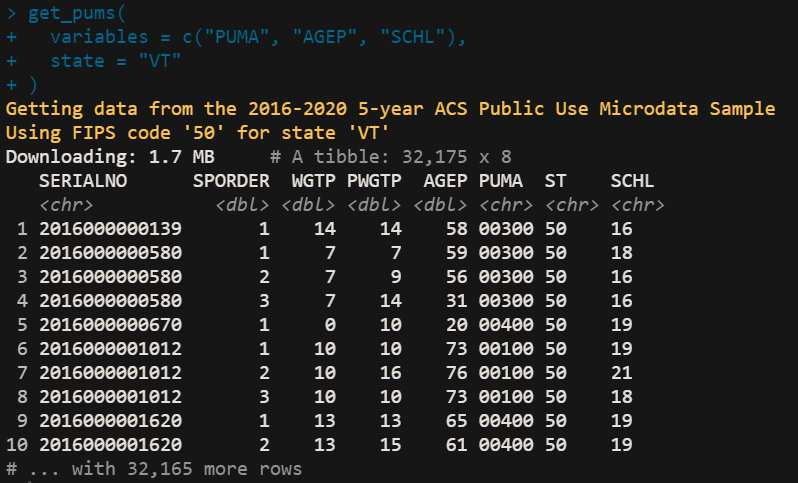
Demographics | Geospatial | Data Science | Open Source
Workshops: https://t.co/q3GDGnGshE
Book: https://t.co/r7xRJMViBx
How to get URL link on X (Twitter) App


 Our first step is to convert this table of X/Y coordinates into a "simple features" object with the sf R package.
Our first step is to convert this table of X/Y coordinates into a "simple features" object with the sf R package. 

 In the mapboxapi R package, the function `mb_isochrone()` helps you calculate isochrones with some extra features to make your life easier.
In the mapboxapi R package, the function `mb_isochrone()` helps you calculate isochrones with some extra features to make your life easier. 

 The latest release of Quarto integrates "lightbox" functionality for images with the option `lightbox: true`. Click to highlight your image for the audience:
The latest release of Quarto integrates "lightbox" functionality for images with the option `lightbox: true`. Click to highlight your image for the audience:

 Our first step is to convert this table of X/Y coordinates into a "simple features" object with the sf R package.
Our first step is to convert this table of X/Y coordinates into a "simple features" object with the sf R package. 



 Mapbox's cartographic product Mapbox Studio lets you design completely custom basemap styles.
Mapbox's cartographic product Mapbox Studio lets you design completely custom basemap styles. 
 Our first step is to convert this table of X/Y coordinates into a "simple features" object with the sf R package.
Our first step is to convert this table of X/Y coordinates into a "simple features" object with the sf R package. 


 PUMAs are used as geographical identifiers for Census microdata. They are drawn after every decennial Census, and represent around 100,000-200,000 people at the beginning of a Census cycle walker-data.com/census-r/intro…
PUMAs are used as geographical identifiers for Census microdata. They are drawn after every decennial Census, and represent around 100,000-200,000 people at the beginning of a Census cycle walker-data.com/census-r/intro… 





 `get_acs()` and `get_pums()` now both default to the brand-new 5-year American Community Survey estimates. If you need other years, be sure to use the `year` argument to get data for that year
`get_acs()` and `get_pums()` now both default to the brand-new 5-year American Community Survey estimates. If you need other years, be sure to use the `year` argument to get data for that year 
